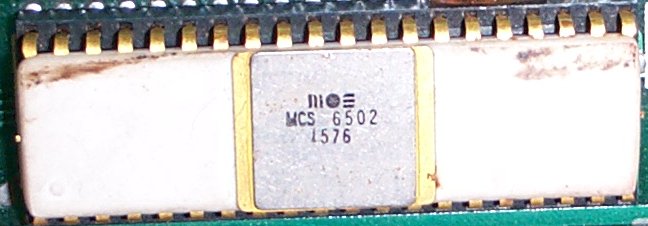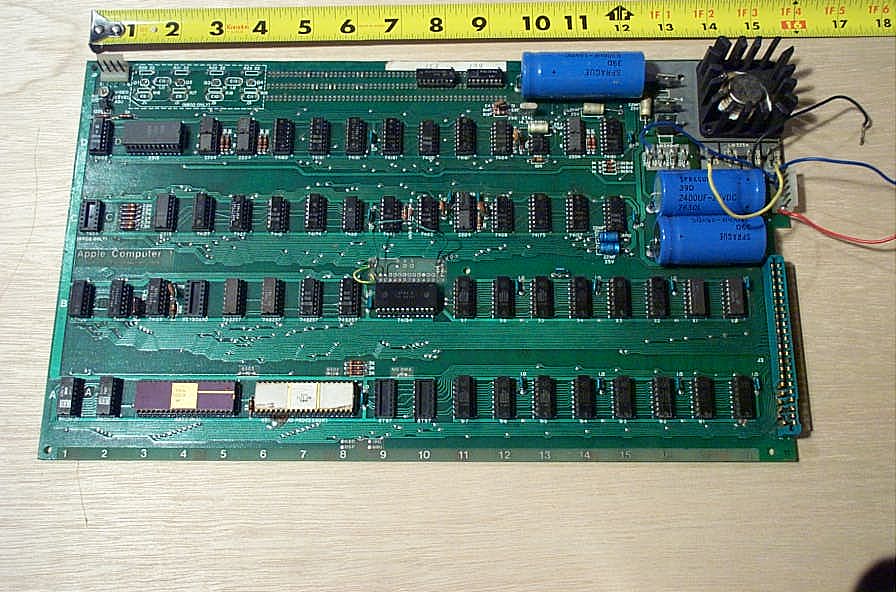|
Apple-1
An Account of the First Home Computer
In the late spring or early summer of 1977, I bought a computer. The Apple-1 circuit board came from a computer store (The Byte Shop?) in Fort Wayne, Indiana. At the same time I also got an ASCII keyboard and a modulator to change video output to channel 3 frequency so a TV could serve as the output.
The next two weeks I assembled a metal case for the circuit board, added step-down transformers, switches and wiring to convert the circuit board into an operating computer. It worked perfectly. I had a 6502 CPU microcomputer with BASIC language and 8192 bytes of memory.
I remember many people asking what I wanted with my own computer. Even the manager at the local Radio Shack couldnt believe an individual could own a computer!
One of the first programs I typed into the computer was HAMARABI. Several other BASIC programs followed from a book, 101 BASIC Games. I also wrote a quite workable Yahtzee game, too.
I wrote to the Apple Computer Company and asked for any other programs and games that they had available for Apple Owners. The form-letter reply said that the Apple was no longer being supported as the company had advanced to the Apple-II. The letter suggested I contact some other Apple owners for programs. Mr. Joseph Torzewski of Grainger, Indiana was starting a Computer Users Group.
I called Joe and in the next few years swapped ideas and programs with him and with other apple owners through a newsletter he produced. However, about 1983 we stopped corresponding, and I lost track of Joe until I stumbled on the Applefritter Site.
The computer had 8 kilobytes of dynamic RAM, which seemed like an unimaginable amount, but I soon found that Murphys Law applied and my applications filled all available memory. Within the next couple of years I increased the memory by replacing one 4K series of chips with the new, high-density 16K chips. I also bought a printer kit from SWTP (South West Texas Products) that could be switched into the circuit to print whatever was being sent to the screen. It printed 40 characters across, just like the monitor, and used wide (4 inch) adding machine tape. In early 1980, at a Ham-fest in Fort Wayne, I also bought a circuit board with 8 K of static RAM and soldered wires to connect it to the Apple board, bringing me up to 28K total RAM.
One of the most interesting uses for the Apple-1 computer was the self-training in machine language and soon after in Assembly Language. Originally the computer did not come with an editor. The only input was in machine language. To load BASIC into memory required a series of hexadecimal commands, i.e. C100R E000.EFFF E2B3R.
The next advance was an editor that contained an assembler/disasssembler. I believe that the editor was part of the new Apple-II. Now I could write programs in 3-letter acronyms such as JMP, ADC, TXA, etc. I read many textbooks, magazines and manuals trying to decipher the codes and combine them into usable programs.
I found a COMPUTE II magazine article that featured a person (Peter Jennings) in Canada who had written a program in 6502 language called Micro-Chess for the KIM-1. I contacted the fellow and bought a copy of the program. It was written for another microcomputer with a 6502 chip that used a different cassette interface. The Apple-1 could not read the tape that came with the program. Luckily, the author of the program sent a printout of the program in MACHINE LANGUAGE. It was over l thousand bytes long. I dutifully typed the entire program into the Apple-1, saving the results on a tape recorder. The game played chess against a human quite well. I soon made small changes to the program, since I had lots of memory (remember the 8192 bytes?), and adjusted the way the program played middle and end games.

|


